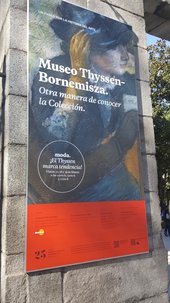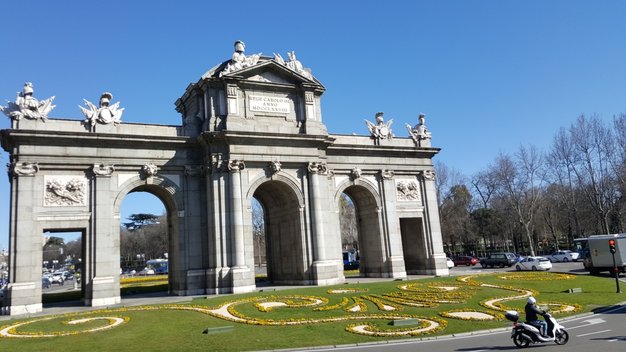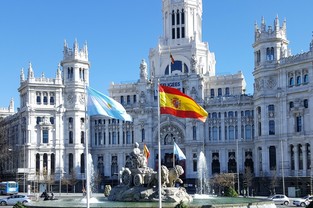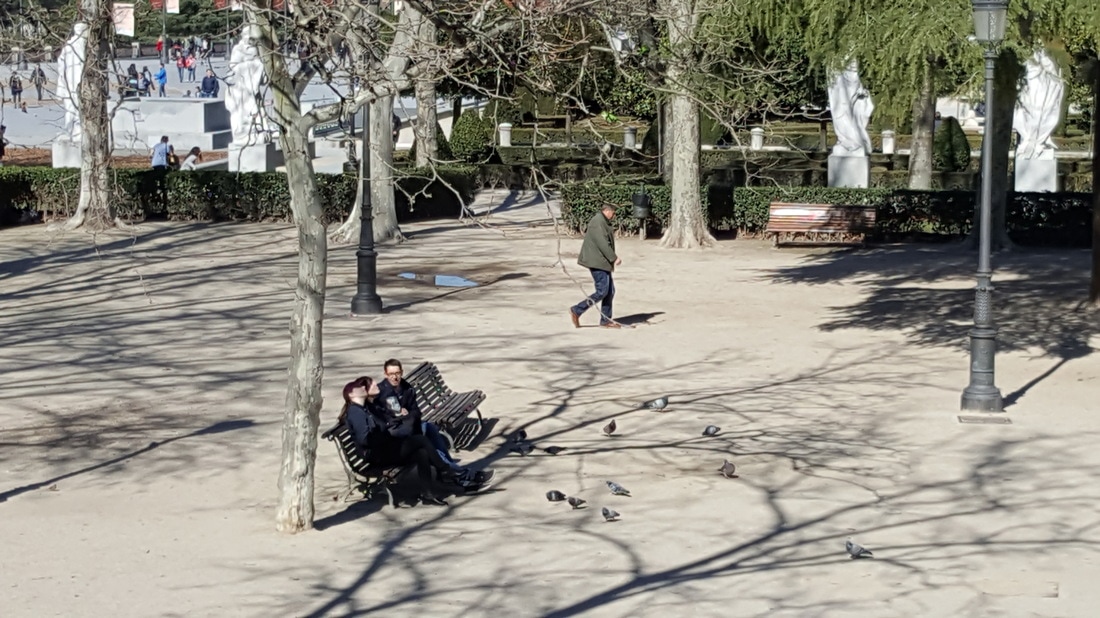The Dominican Republic is a great place to visit. See our visit at Karisma's Nickelodeon Hotel.
 We have many options when it comes to credit cards. How do you decide which one to use? If you travel on a certain airline a lot, you may want to consider their credit card. One of the main reason is that you don't have to pay for the first checked bag and this can add up at $25 to $35 each way. If you have a family, you will save a considerable amount of money. However, if you travel solo and you use many different carriers, you may want to consider a more generic card. The reason is that you can get higher rewards and you can redeem them even if you only have enough for a partial payment of a flight. Some cards are redeemable for cash instead of flight reward points. Check out some of the options below. Capital One Venture Annual Fee:$0 intro for first year; $59 after that 13.74% - 23.74% (Variable) CARD DETAILS: Enjoy a one-time bonus of 40,000 miles once you spend $3,000 on purchases within 3 months of approval, equal to $400 in travel Earn unlimited 2X miles per dollar on every purchase, every day Fly any airline, stay at any hotel, anytime Travel when you want with no blackout dates Capital One Premier Dining Annual Fee: None 15.24% - 24.24% (Variable) CARD DETAILS: One-time $100 cash bonus after you spend $500 on purchases within 3 months of approval Earn unlimited 3% cash back on dining, 2% on groceries and 1% on all other purchases No rotating categories or sign ups needed to earn cash rewards; plus, cash back doesn’t expire and there’s no limit to how much you can earn No annual fee No foreign transaction fees Barclay Cash Forward Master Card Annual Fee: None 0% (15 months (on balance transfers made within 45 days of account opening)) 15.74%, 20.74% or 25.74% Variable CARD DETAILS:
Summary of Key Features: Regular APR10.99% (14 months)11.74% – 23.74% Variable Annual Fee: None CARD DETAILS:
Capital One Spark Cash for Businesses Earning unlimited 2% cash back could mean thousands of dollars each year going back into your business 17.74% (Variable) Annual Fee:$0 intro for first year; $59 after that Use of 2% on anything Note: There is also a Capital One Spark Travel for Business. You must use your rewards for travel purchases only. Same Fees apply and you receive 2 rewards points/dollar. Other Capital One Spark Cards: Earn 1.5% back for Cash or Travel and there is no annual fee. They all offer some type of cash or reward credit for new applications if you spend a certain amount of money in one to three months. This is not all inclusive. There are many offers by several different banks. For further information click on https://ptmoney.com/best-travel-rewards-credit-cards/ Copyright 2017 Peterson Travel Pros LLC  When Mark and I landed in Madrid, we quickly went through customs and asked for directions to our hotel. The people in the airport were very friendly and told us to take the bus to the Atocha stop, about 35 minutes away. The bus was an express, only $5 and left the station often. Atocha is the largest railway station in Madrid (and Spain). It is the primary station serving commuter trains, intercity and regional trains from the south, and the AVE high speed trains from Barcelona, Seville and Valencia. You can go from Madrid to Valencia in just 1 hour and 35 minutes. There is also a high speed train from Barcelona to Madrid. Prices vary on the demand and times. They range from $50 to $150. When we got off the bus, we were entranced with the dance of people in the streets, the buildings, and the hustle and bustle of cars. Our hotel was only a block away, so we walked to Hotel Paseo del Arte. We were situated right in the middle of the art district. The hop off and on bus was around the corner, subway across the street, and easy access to many museums. Museums .We were so excited to see the sites, we decided to drop our bags and go sightseeing right away. We were only about 5 blocks from the Golden Art Triangle: The Prado, Queen Sofia, and Thyssen-Bornemisza Museums. However, we thought we'd start with a quick hop off and on tour of the city. We bought a 2 day pass which was a bargain. After a quick circle, we went back to the Prado and toured the museum. The Prado has 8600 paintings. Many of them are religious in nature. They range from Italian, Flemish, German, and Spanish. The Thyssen-Bornemisza Museum is right across the street. It opened in 1992 and has 14th and 15th Century paintings as well as impressionistic and post impressionistic paintings, even some from the 20th Century. If you like the mix of modern and realistic, I recommend the Thyssen Museum. You can get in free on Mondays. The Queen Sofia Museum is not far either. It is a Spanish museum with contemporary art. It is closed on Tuesday. City Center  After all our sightseeing, we went back to the hotel and took a short rest. At 6:00 pm we met our foreign exchange student's mother, Elsa. It was such a treat to be with her. She took us to the center of the city. The center is a very robust area with lots of shops and restaurants. The first place we went was Plaza Mayor Square. It is a large square where there are markets, cafes, even soccer games and bullfights at times. There were a lot of people in the square with singers and people dancing. There were also people dressed up like cartoon characters and space aliens. It reminded me of Times Square in New York except without the cowboy. There are several shops and one of the main ones is El Cortes Ingles. We went to the top floor, 9th. The view was awesome. We were there at dusk ans saw the sunset. They have dining inside and out. The top floor also has a gourmet section, with outstanding views. The basement has a grocery. It is fun to shop and look at prices and Spanish food. After enjoying the sunset, we took a walk down several of the streets. We were in the midst of the Plaza del Callao. It is a busy square bustling with people. The buildings are art deco, especially the Callao Cinema Building and the Carrion Building with its neon Schweppes billboard. It was amazing to see all the lights. Again, New York's Time Square is a good comparison to the tall building around the center of the city. There were a variety of large and small stores. I even recognized a few names such as Taco Bell. However, some of the restaurants, were small and only sold food from a window. Their pork sandwiches are a specialty. We opted for a small, inside restaurant. Elsa made sure that we knew what traditional Spanish food was like. Here is our menu: Muddy Pies (small round shapes of dark brown rice), Boiled fish with eggs, and a plate of cold cuts (a variety of types of ham including jamon and salami) served with bread. I love their ham; I know that Squid and Calamari are also very popular. There is a fried calamari sandwich that is a signature dish. It is a lot of fun to try different foods. After dinner we took the subway back to our hotel. The subways are great and easy way to get around the city. Architecture and Fountains Our hop on and off ride continued the next day. We had to visit some of the things that we couldn't see the day before. Just looking at the architecture as we drove around the streets was amazing. So many buildings in Madrid look like palaces that you feel as if you are transported to a kingdom of different cultures and times. As you took the tour, you had a narrated story of the culture and historical significance of the buildings that were preserved by the Spaniards. The squares also have fascinating statues and fountains. One of them is Cibeles Square and is found at the intersection of Alcala Street, the Paseo de Recoletos and the Paseo del Prado (south, towards the fountain of Neptune). This place is one of the most symbolic of the capital. In the center of square, is situated the famous fountain of Cibeles, sculpted in 1782. It is a neo-classical complex of marble sculpture that has become an iconic symbol for the city of Madrid. The fountain of Cibeles has been adopted by the Football Club Real Madrid, whose fans use the area to celebrate its triumphs in competitions. Make a wish on the Cibeles fountain. It was made in homage of the goddess Cybele in the form of a beautifully ornate statue in her likeness on a chariot dragged by two lions. The fountain was built in the reign of Charles III between 1777 and 1782. Appreciate the nearby Neptune Fountain which honors the god of the sea with his mighty trident and sea horses. The streets are narrow, the city being very compact. One of the most famous streets is the Gran Via Ave. It is lined with many cinemas, theaters, night clubs, and bars.  Finally, we visited the Royal Palace of Madrid, which is the official residence of the royal family but is used only for ceremonies and state functions. Its beauty and grandeur surpasses that of any other castle in Europe, and was vaulted in stone and brick during its construction, rendering it indestructible over the centuries. The palace itself contains furniture, tapestries, paintings and ceramics as well as other important works of art and frescos by Tiépolo. Velázquez, Goya, Giordano and Mengs are all represented here amongst the dozens of valuable tapestries and paintings, making the palace one of Europe's most important museums and receiving more than 880,000 visitors in 2006. It remains open to the public almost year round except on the days of official ceremonies and receptions, although the public can only access certain areas. It is located on Bailén street, and the nearest Metro station is Opera. Once inside the Royal Palace you have a choice of purchasing either a ticket for a guided tour, or a normal ticket (€1.00 less) so that you can walk around at your own pace. The guided tour is in depth and takes about 45 minutes. If you walk around under your own steam, there are still information points throughout that explain more about each room and its function. You have access to lavish halls, banqueting rooms, the throne room, residential areas, the Royal Armory and Royal Pharmacy. Many important events have taken place within the walls of the Royal Palace. For example, the Hall of Columns was where Spain signed a treaty that gave them acceptance into the European Union in 1985.Outside the palace is a beautiful park called Plaza de Orienta. It contains 20 sculptures of Spanish kings. The gardens nearby are beautiful.  Getting back on the bus, we past a beautiful Alcala Gate. It is a granite monument in the Plaza de la Independencia square. It stands near the city center and several meters away from the main entrance to the Buen Retiro Park. The square is bisected by Alcalá Street. One curious piece of information about this Gate: It has some statues on top, representing four cardinal virtues: Prudence, Justice, Temperance (or Restraint) and Fortitude (or Courage). In the Alcalá Gate, the cardinal virtues are represented by four children. It is now considered a National Monument. Almudena Cathedral  Another must see is the Almudena Cathedral. This is a catholic Cathedral. Construction was started in 1883 and completed in 1993. It is modern with chapels and statues of contemporary artists. Our tour was complete and we decided to go back to the center of the city for our last night in Madrid. On our walk to the center, we passed a lively bar. We couldn't resist going in. There were locals and tourists enjoying beer, wine and the popular bocadillos (baguette with ham and cheese). It was happy hour and every one was happy. The restaurant had a middle bar where all the action took place. Around the edges were lots of hanging pork shanks. It was amazing the amount of meat that was surrounding me. We had our dinner and walked to the center square. The night life is amazing and you couldn't have had better weather in the beginning of March. On our way back, we walked past the lite Cibeles fountain. What a way to spend our last night in Madrid. For help planning your next trip, contact https://www.PetersonTravelPros.com
For more information on sites in Madrid check out 33 things to do in Madrid.  Can you imagine going to Kazakhstan to adopt a child. On your way to picking up the child, you are in a car accident. You're taken to the hospital and air flown to the closest medical facility that is for severe head trauma. You don't make it. Your survivors must make all the arrangements and pay for all the expenses: hospital, airlift, and evacuation back to the US. This is a real story where the couple had no travel insurance and the expenses were exorbitant. I have other stories that give great examples of why to have travel insurance. Kate and Jason traveled to Thailand to enjoy a couple of weeks which included a few days in Bangkok and Phuket and are grateful that they took out a comprehensive travel Insurance policy before they left. Within the first few days of their vacation Kate got ill resulting in the hotel having to call the nearest hospital to reach a doctor. The doctor was required to make an in-house service call as Kate was too sick to leave the hotel. Kate was administered with 3 different types of medications to treat her condition at a cost of over $400. Within 24 hours Jason became ill and wasn't in a condition to look after Kate, so based on the hotel Manager's recommendations they both visited the nearest hospital which came with some trepidation. Fortunately they called the Travel Insurance 24/7 emergency hotline and were quickly advised what they should do given their circumstances. This included giving advice and providing reassurance on which hospital to go to within close proximity to the hotel. Upon receiving this information Kate and Jason were given the contact details of a 4 star rated hospital, so after a short ambulance ride, both Jason and Kate were at ease knowing they were going to a private hospital. This required proof of their travel Insurance so they could be admitted into the emergency area immediately. Kate & Jason avoided approximately A$5,000 in medical expenses. Another example is Jess, who had a pool accident while abroad. She dove into the pool, not realizing there was no deep end. Lucky for Jess she had taken out a comprehensive travel insurance policy. It was a shocking accident and one that required a dedicated air ambulance to bring Jess back to her country for further treatment and surgery. Jess’ comprehensive travel Insurance policy covered the following expenses:
Now if you ask me, should I always take out trip insurance, I would probably say no. You need to look at the risk and the comfort. If you are a worrier, it's difficult to put a price tag on peace of mind. However, check out what you have for coverage already. Some credit cards offer travel coverage if you make the purchase on their card, but it might not cover everything. Also, Check your medical insurance. They might cover you while you travel. Here is what travel insurance can cover: You pay a higher price for more coverage. 1. Loss of deposits or prepayments. If you prepay a large amount and have to cancel at the last minute, insurance will cover it, esp. if you have cancel for any reason. Usually you have to forfeit deposits if you don't cancel 45 days prior to departure. 2. Extra expenses of returning home before your trip ends. This could be from an accident you were in or a relative at home was in. 3. Medical Expenses. You never know when you could get sick on a trip. 4. Emergency Transport home. 5. Car Coverage You just never know what could happen. It could be a snow storm, hurricane, flood, accident, or medical emergency. The volcano that erupted in Iceland in 2010 caused a lot of ramifications for travelers. The air was probably covered if the flight was canceled, but how about your hotel. If you feel tentative about a trip because of business reasons or a friend or pet being sick, you may want to get cancel for any reason insurance. Normally standard insurance doesn't cover expenses for leaving if someone other than a relative is involved. No matter how well your trip is planned, something could go wrong. For both financial security and sanity of mind, it's important to get yourself travel insurance especially if you travel out side the US. To answer you question, you may not always need it. If you are 65 and taking a two week trip to India, plan to rent a scooter, eat street food, and sleep in already reserved 5 star hotels, I'd recommend insurance for the investment. If you are 30 and going to London, staying at a friend's apartment, and buy discount tickets to events, I think you could skip the insurance. Keep in mind the travel insurance company not only covers expenses, they also give you advice of where to go and if you are getting the right diagnosis. Weigh your options and check your existing coverage to make an educated decision. You may love it as Jess did, saving $125,000 in expenses, or you may leave it if you have medical and credit card coverage that you feel meet your needs. Or you may buy partial insurance such as Medical only insurance. Love it or leave It. |
|








